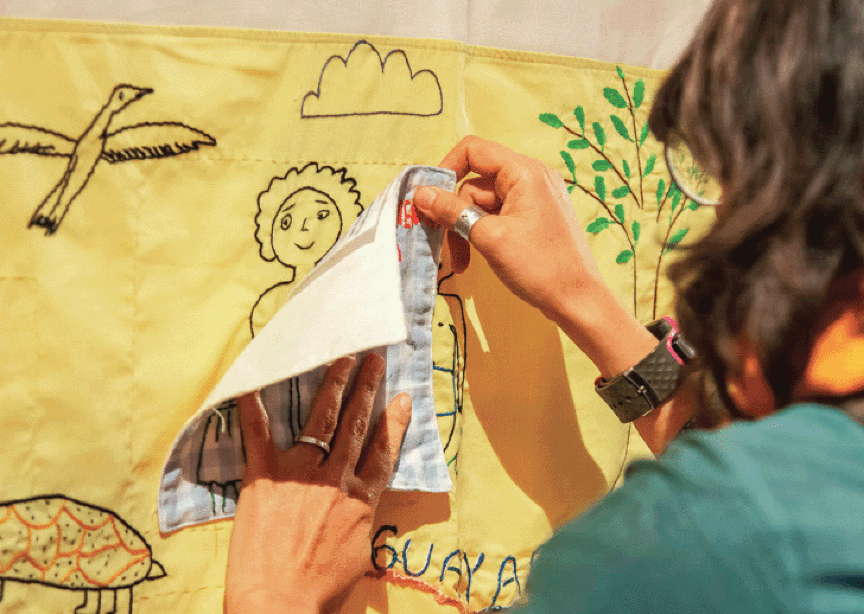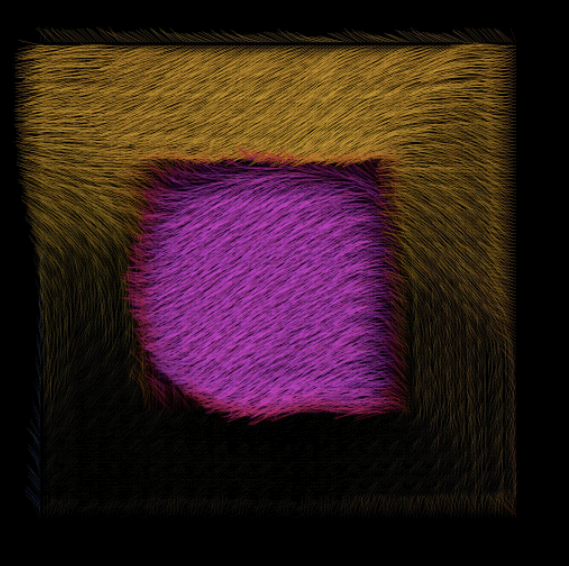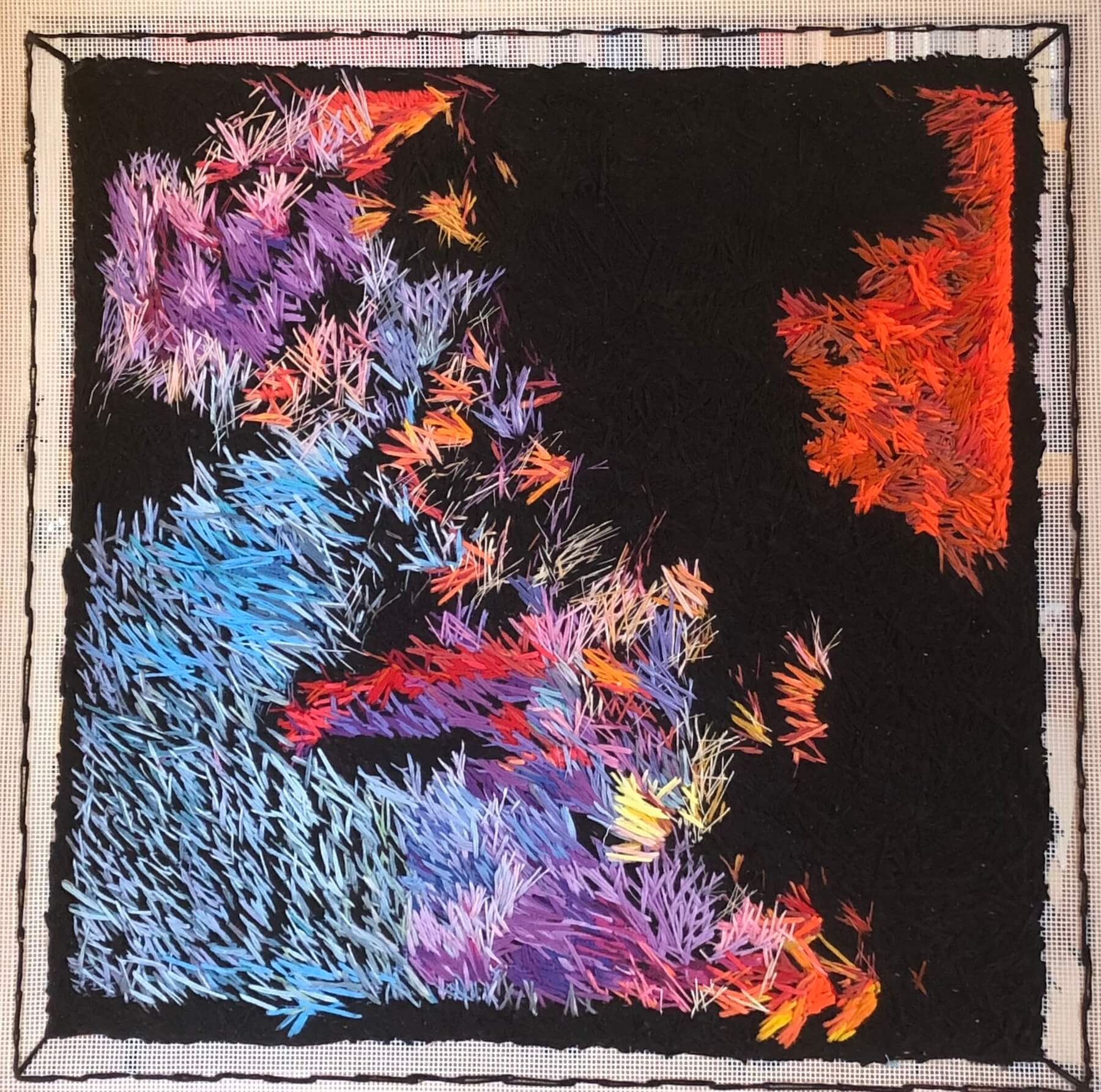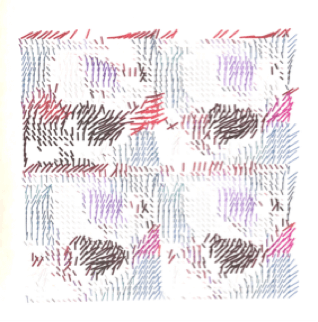Craft, design, and technology. Just listing them in this order suggests a movement from hand to head to (thinking) machine that once would have been taken as evidence of ‘progress.’ Today, such hierarchies are not viable since making, producing, and dissemination are no longer discrete categories. The power relationships that once devalued craft, viewed design as mere commodity, and exalted technology as a savior have been destabilized. The first tremors were felt in the mid-20th century with widespread critiques of technology’s destructive nature after the use of the atom bomb, which, in turn, effectively discredited the modernist project that had put its faith in simplification (even purification) with little or no tolerance for pluralities. The dismantling of the old value systems took on more energy in the ensuing decades with the rise of the social civil rights movements—of which decolonization is the most current expression. While these upheavals contributed to the conditions that would lead to a more open aesthetic climate—with all its political implications of inclusivity—I would argue that the most influential driver behind current cross-pollinations has been the recognition of ecologies. The nascent environmental movement of the 1970s would trigger a larger cultural awareness of interdependence of living and nonliving entities. In the 1990s, a parallel web of connectivity, this time not natural but technological, would arise from the networks of cyberspace. It seems, as the novelist John Banville writes, that we can no longer ignore “the unbreakable continuum of the world.”1 (Or ‘worlds,’ given the growing popular awareness of quantum physics and theories of the multiverse.) Now it is increasingly clear that the heightened awareness of the inter-relatedness of things requires multiple lenses to understand the behaviors of natural and artificial beings, and their permutations and combinations.
The more complex perspectives that have evolved necessitate the cross-pollinations of theories, methodologies, and practices—in particular, and for our purposes, those having to do with craft, design, and technology. Complexity hasn’t, however, fully negated the differences among them or the values associated with them. Rather it has led to synthetic approaches that share some common traits but are distinguished by the degrees of emphasis on one or another mode of making and their makers’ intentions. Accordingly, this paper considers the thought that has helped re-position craft, design, and technology within a relational framework—one that we haven’t seen since the seventeenth century, when “artists were thought no different from artisans and their methods of working were equally described as ‘technical.’”2 I will then discuss three different approaches to the integration of craft, design, and technology: the first has to do with human and architectural bodies; the second, with repairing social fabrics; and the third, with the aesthetics of computation.
Context: the role and rise of the performative
The world is but a perennial movement. All things in it are in constant motion—the earth, the rocks of the Caucasus, the pyramids of Egypt—both with the common motion and with their own. Stability itself is nothing but a more languid motion.
Michel de Montaigne, “On Repentance,” 15803
In observing that not only rocks, but also human nature, is varied and volatile, Montaigne—himself drawing on Lucretius’ theory on atomic motion written circa 60 BCE—holds a view of the world that is uncannily familiar to us in the 21st century. The elliptically recurring recognition of the unstable and performative nature of life—from ancient Rome to Renaissance France to the present—is a useful reminder of the misplaced faith in linear progression that dominated much of the 20th century, the kind that led to thinking that craft, design, and technology evolved in sequence. Today we recognize that instead of discovering ideas, we build upon them. To that point, we can understand ‘perennial movement’ not just as a condition of being, as it was for Montaigne, but also as an invitation to move across intellectual, social, and material realms in pursuit of more fulsome understanding of our effects on, and experiences of, the world.
This is particularly true in design where a critical shift in understanding of what it means to design has been percolating since the 1990s under the rubric of ontological design. This view holds that design is essentially (but not instrumentally) performative. In her 2006 essay “Ontological Designing—Laying the Ground,” design studies scholar Anne-Marie Willis uses the example of designing with a machine tool to illustrate the behavioral (ontological) nature of design, writing:
wherein [the designer’s] knowledge comes to be inscribed by being with the ‘designing being’ of the tool, this in turn modifying the being of the tool user. To complete this circle a third step is added—interpretation—in which the ‘designed being’ of the user acts back upon the tool or the material being worked on, with the effect of modifying or improving the process.4
In other words, designing sets in motion a continuous reciprocity between and among the designer, the tool, the designed thing and the situations it creates.
In a similar vein of thought, designer Otto von Busch—drawing on scientists’ observations of insect colonies as a model for understanding the social dynamics of craft—observes that “every living system is a cognitive system, and life itself is a process of cognition, reflexive feedback control, and interoperation with the surrounding world.”5 He further argues that “coordination is an integral part of the cognitive act itself”6 —a claim he extends to communities of craft. The enmeshment of actions and knowledge in effect becomes the ‘tool’ in communal craft production that engenders worlds, echoing what Willis and others describe as design’s capacity for ‘worlding.’7
Equally, the nonliving, yet animate, digital networks—that, for example, power artificial intelligence—also contribute to the constructive disequilibrium that enables disciplinary convergences. The digital realm’s structural correspondences with craft—particularly with textile crafts around which this paper revolves—allow the virtual and analog to come together under the rubric and reality of fabric. Clearly, the operations of the digital also exist within Willis’s hermeneutic circle—or to my mind, cycle. For when unexpected events intrude, as they inevitably will with complex data, the dynamic is activated again—a dynamic that requires a response with all the ethical implications that the word entails.
In the examples that follow we will see a reciprocity of capacities—put to different ends—in which crafting (the haptic processes of making), designing (developing the concept), and the algorithmic systems of technology (a dematerialized making) are no longer mutually exclusive.
Instead, the haptic, the conceptual, and the systemic are distributed across modes of making.
Case study 1: Human and Architectural Bodies

Fig. 1 Branching Morphogenesis, LabStudio, 2008
The work of modeling and understanding responsive structures in dynamic contexts conjoins the work of architectural designer scientist Jenny Sabin and matrix biologist Peter Lloyd Jones. Jones, studying breast cancer and other cellular formations, investigates how cells are continually changed by the bio-neural-chemical environments around them. Sabin believes that, likewise, buildings should not be immune to their environments: They (and we) can benefit from incorporating sensors and conductive materials to respond to external elements (e.g., climate and human activity) as opposed to sealing them off.
Sabin and Jones’ collaboration (conducted through LabStudio at University of Pennsylvania and Cornell University) centers on the how buildings can behave more like organisms in their built environments and how the body’s extra-cellular matrix (ECM) changes in both diseased and normal growth. They compare the ECM’s network around our cells to an architectural textile with its malleability and capacity for grafts. In pursuit of their parallel and overlapping investigations of biosynthetic dynamics, their tools include digital scans, 3D printing, and computer modeling driven by advanced mathematics.

Fig. 2 Detail, Branching Morphogenesis
However, they also craft analog models, such as the human scale structure Branching Morphogenesis. It was made of 75,000 plastic zip ties chosen for their adjustability in modeling not cells, but cellular dynamics. The value of introducing the haptic element of craft for medical researchers is that it adds sensory experiences to understandings gleaned (on a smaller scale) from microscopes and flat screen imagery. For architects, Sabin believes that “developing a bodily intuition from a practiced hand tempers decisions about adjusting the computer codes.”8
In contrast to the literal mirroring of biomimicry, Branching Morphogenesis—as well as the investigations that followed it, meticulously documented in their book LabStudio—draws on matrix biology to “make something that doesn’t look exactly like the cellular structure but functions and behaves like it.”9 Conversely, Lloyd Jones deploys the language of textiles as both metaphor and description when he writes that cells act “as looms producing their own thread and weaving that into their near environment. As they change that environment, their instructions immediately alter and they then weave a different path.”10

Fig. 3 Body Blanket, Jenny Sabin, 2005
Here it is worth noting that the LabStudio’s collaborations have roots in a very personal project—a digitally woven blanket that undulated like a pulse: a patient’s pulse. It was made to enhance communications with doctors treating a patient’s cancer. Similarly, for Lloyd Jones, it is the real possibility of relieving pain and suffering in the arena of treatment that motivates his research in the lab.
Taken together, their work is an exploration of the parallels between the active data spaces of both the human body’s biology (the motility, surface and environments of our cells) and inherently and indefinitely expansive technologies (from the binary systems of weaving and knitting to binary extrapolations of digital computation). Their mutual interest in the operations of instability are contributing to a broader notion of ecology, entailing multiple force fields on surfaces, below surfaces, and outside them, all acting in dynamic tension with each other. It is also, in keeping with Willis’s ontological notion of design, grounded in the ethics attendant on engaging with and changing behaviors, in service to healing the body and the built environment.
Case Study 2: Repairing Social Bodies
Craft, design, and technology would seem to be unlikely bedfellows in addressing the traumas of war unevenly distributed over the 1,141,748 sq. kilometers (or 440,832 sq. miles) that constitute the nation of Colombia, South America. But it was the very distances that separated those most affected that led to the development of a response that took material, digital, and social form.
In 2016, after a peace agreement was signed to end the 50-year civil war in Colombia, the government launched a concerted effort to foster reconciliation among the perpetrators and the victims of war crimes, the latter often women. Two years later a multidisciplinary team of social scientists, digital designers, and textile crafts persons in Bogotá and Medillìn launched “Mending the New: A Framework for Reconciliation Through Testimonial Digital Textiles in the Transition to Post Conflict Rural Colombia.” The cohort engaged with four groups of craftswomen in Sonsón, Quibdó, Bojayá, and Mampuján.11 These collectives had already spent years embroidering, knitting, and sewing their memories of the armed conflict. Now, working with transdisciplinary teams, the women of the collectives began to give form to their feelings about something beyond the harm they experienced—namely, reconciliation.
The project to create embodied, sensory responses to a process that raises a mixture of ambivalence, anxiety, and hope was designed to go beyond the more ephemeral conversations that characterized much of the government’s institutional efforts at reconciliation. The textile stories envisioned wouldn’t be static or self-contained; they would be heard as well as seen by virtue of transmissive technologies.
Mending became more than a metaphor as the women embroidered or knit and talked about how they might move forward in peace, even as conflict continues to erupt. The full scope of this work (which can found at https://www.artesanaltecnologica.org/remendar-lo-nuevo-mending-the-new ) is too vast to do justice to here. We will, however, look at one exemplary project: the “Tapestry of Reconciliation.”

Fig. 4 “Tapestry of Reconciliation,” Artesanías Guayacán collective, 2019
Created by the women of the Artesanías Guayacán collective of Quibdó, the hand-embroidered tapestry depicts scenes of daily life along the Atrato River with figurative elements like the turtle—a symbol of the slowness of reconciliation—as well as features of the landscape that have sustained them through the arduous process of healing.12
As the women stitched, their stories about the river, the landscape, and the conflict were quietly recorded. To make them audible, textile speakers were attached to key zones of the piece (Fig. 4). However, the stories can only be heard by placing a small, embroidered textile square, embedded with an RFID, over each area (Fig. 5). In keeping with the women of the community’s wishes, the gesture of connecting was designed to be intimate, and even a little awkward to show that listening isn’t easy.

Fig. 5 Detail, “Tapestry of Reconciliation,” in the process of being ‘heard’
One of the most compelling aspects of these collaborations was their respect for the time that is requisite to reconciliation. Not the palliative nature of dimming memories but the real time involved in textile-making and listening. To that end, these collaborations in making, transmitting, listening, and connecting are emblematic of what French philosopher Jacques Rancière calls the ‘distribution of the sensible.’13 He observes that:
[B]y drawing lines, arranging words, or distributing surfaces, one also designs … certain configurations of what can be seen and what can be thought, certain forms of inhabiting the material world. These configurations, which are at once symbolic and material, cross the boundaries between arts, genres and epochs.14
And, I would add: boundaries between people—here, the racialized, victimised women who made the textiles, and the engineers, designers, and social scientists, who were their partners. As with LabStudio’s work, the Colombian project centers around healing, forming new communities of knowledge stimulated by the experiences of negotiation and translation. To that I would also add, the pleasure that comes in recognizing a mutuality of purpose among disparate fellow travelers.
Case Study 3: The Aesthetics of Computation
“Echo Chamber”—a collaboration between artist David Young and me—was also instigated by a mutual recognition, here a kind of mirroring we identified between stitch work and the digital images David created by incorporating artificial intelligence into their production. The ambition of this collaboration is not to offer physical or psychological benefits in the way that the two previous cases do. It does, however, share in their broader politics, in that it sits opposite to the typically instrumental applications of AI, which in David’s words, “further accelerate and optimize the scales, and inequalities, already in place.”15 The scale at which “Echo Chamber” is more concerned with depth than breadth. Fundamentally tied to the pixel, it asks questions about what it means to see digital light (via the photographic image) when it is filtered through two kinds of mediation: artificial intelligence and manual stitching.

Fig. 6 David Young, “A Line is a Pixel Expressing Itself,” Manipulations series, (m,b70h,9001,4-20,4,22,11,4,27-c)
The project was stimulated by a series of images entitled “Manipulations” that David had created with an artificial intelligence program and his own custom software. Though the images bore an uncanny resemblance to threads, they were not derived from cloth but abstract shapes of color. We became curious about what would happen if the AI were trained on an analog textile, in this case, one of my woven darns.16 Digital photographs of the stitched pieces were fed into the AI program, which produced images that went from being incomprehensibly jumbled to something closer to the images of the darns it was trained on. At this point, David halted the process, and selected a single image (out of infinite number of possibilities) which he then manipulated. That image was printed on an 8” × 8” canvas, which I then stitched with highly keyed embroidery floss.
“Echo Chamber: Darn” (m,b71a,3295,20,4,27,13,31,59-c)
A collaboration between Susan Yelavich and David Young, 2020

Fig. 11 Stage 4: Stitched digital darn
In effect, two textile forms were compounded: the embroidered and the digital. The image-generation process didn’t become fully clear to me until David invited me to manipulate the AI-generated images of my darns with his software. It was then that I saw first-hand how malleable pixels could be, able to morph from fuzzy to spikey, from dense to sparse.17 I learned that what I construed as the equivalent of extending a musical note was a function of the ratios between pixels (increments of light, measured and translated to data) and number of the screen’s display elements.18 Furthermore, it became evident that on a computer screen, the image behaves like a knit fabric, in that it can be stretched.19 That said, once fixed into an image, it still respects the binary structure of a mesh. To wit, I traded small tightly woven canvases for openwork scrims as the ground for my next stitch work.

Fig. 12 “Echo Chamber” iteration
Working on a larger scale of 20” × 20”, I became more closely attuned to the inherent control of the binary. Just like the pixels on a computer screen, the holes in the fabric mesh are arrayed in a grid. I was caught between what anthropologist Tim Ingold, in his seminal work Lines, describes as the difference between a field for marks (the surface I stitched on) and marks that make the field (the obliteration of the surface).
The question became whether it was possible to exceed the binary without disavowing it as foundational. Could David’s manipulated pixels and my lines of thread stitched into a grid produce something gestural? Or has the gridded line, as Ingold claims, been “fragmented—under the sway of modernity—into a succession of points or dots”?20 Might we be able, as he suggests we do when we walk through a town, to thread our own ways through the digital binary, tracing paths as we go?21
As liberating as that sounds, I’ve come to the conclusion that the freedom implicit in Ingold’s ‘trace’ is, in fact, conditional. (Even cutting across a field instead of sticking to the line of a road requires negotiations with the character of the terrain.) So it is in “Echo Chamber.” The AI has produced an interim space of creation, complicating questions of authorship. Stitching along and around lines of color (derived from pulses of colored light) printed on mesh, and then seeing them come into three-dimensional stitches is a bit like being a spectator of one’s own work. The result has the quality of a doppelgänger—albeit off-kilter and inexact. Likewise, David’s photographs (https://davidyoung.art/ ) evoke a similar sense of vibration. In the “Echo Chamber” pieces, there is a movement that is both seen and sensed, not only formal or visual, but also that of a liminal space between subject and object.
Conclusion
The three practices described here were chosen to demonstrate the divergent ends to which design, technology, and craft can be put. LabStudio investigates cellular behaviors and their implications for sustainable architecture. The collaborative team behind “Mending the New” is engaged in fostering civil society. “Echo Chamber” explores the digital microcosm of pixels. These ambitions are their design—that is, if we frame them as ontological in the ways they shape the relation between human beings and life worlds.
Implicitly, however, that shaping deploys strategies. It doesn’t have to involve handcraft and/or technology. One can devise systems—whether of tenets of law or protocols for arbitration—without them. Nonetheless, within those systems are human encounters and conditions that require the mediation of virtual and analog materials in order to be made present. More than that, to foster agency in the face of daunting complexity. Increasingly, we are seeing that there is value in deriving agency from lateral explorations—explorations that, for our purposes, view craft and technology, if not as coterminous, than complementary. Digital media designer Malcolm McCullough observes that craft is “the application of standard technology to unanticipated … ends.”22 The limits of technology’s ‘anticipated ends’ is precisely what each of the projects featured here contests. They invert the presumed temporality of technology to give us time to think, draw comparisons, and speculate. They also work against its spurious claims of perfection by including the fallible human hand. Furthermore, they understand technology as crafted. At the heart of the matter, these crosspollinations temper values—on the one hand, the indifference of technology’s ‘standard’ pursuits of speed and profit, and on the other, the romantic subjectivity of craft that sacrifices the shared pleasure of recognition for hermetic gratification. Instead, they combine the immediately accessible haptics of craft with the immediacy afforded by the digital in processes of worlding.





